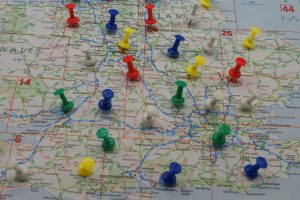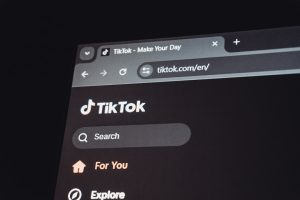
In today’s fast-evolving B2B SaaS landscape, the traditional sales-driven approach is being overtaken by a more user-centered methodology: Product-Led Sales (PLS). At the heart of PLS lies a fundamental paradigm shift — users experience value from the product before making a purchasing decision, allowing businesses to use quantifiable product usage signals to guide outreach and conversion. This model empowers product usage data to lead the path to sales readiness, making the process smoother, more timely, and efficient.
This article explores key concepts of Product-Led Sales, including hand-raisers, PQLs (Product-Qualified Leads), and the critical signals to track for high-intent buyers. With the rise of product-led growth (PLG) strategies, understanding and adopting these concepts has become essential for modern SaaS sales teams.
Why Product-Led Sales?
The foundation of PLS rests on allowing users to self-educate, test features through free trials or freemium models, and organically reach the “aha” moment. Rather than pushing demos and requiring first-name-last-name-company-work-email upfront, PLS enables genuine engagement.
As users interact with the product and derive value, they become more receptive to upsells or personalized outreach from sales teams. This approach not only improves customer satisfaction but also boosts key metrics like conversion rate, Customer Lifetime Value (CLTV), and Net Revenue Retention (NRR).
Hand-Raisers: The Direct Route to Sales Readiness
Hand-raisers are users who explicitly express interest in learning more or talking to a sales representative. Unlike traditional leads compiled through lead generation forms, hand-raisers signal direct interest from within the product itself.
Typical examples of hand-raising behavior include:
- Clicking a button to request a demo from inside the product
- Upgrading to a premium version
- Initiating contact through support with pricing inquiries
- Navigating to pricing or enterprise sections frequently
The beauty of hand-raisers lies in their simplicity — they indicate direct sales readiness. But identifying intent doesn’t stop with hand-raising behavior. There exists a powerful category in between passive users and hand-raisers: the Product-Qualified Lead.
What Is a PQL?
While Marketing Qualified Leads (MQLs) rely heavily on page visits or gated content downloads, Product-Qualified Leads (PQLs) are based on how users actually interact with the product. A PQL is someone who has used the product and shown early signs of deriving value — even if they haven’t formally raised their hand for sales interaction.
This makes PQLs especially powerful. They’re contextually engaged, informed about the product, and often representative of high conversion potential.
Examples of conditions used to define PQLs include:
- Completed key onboarding steps
- Invited team members
- Integrated third-party tools
- Reached specific usage thresholds (e.g., number of projects created, messages sent, files uploaded)
A well-configured PQL definition is a holy grail in PLS. It allows sales teams to prioritize outreach based on user behavior rather than guesswork.

Signals to Track: Reading Buyer Intent Through Data
Tracking the right signals is at the core of successfully implementing Product-Led Sales. These signals provide a window into user behavior and help forecast when a user is approaching a purchase decision. For PQLs, signals should be both engagement-based and context-aware.
Top Behavioral Signals to Monitor:
- Feature Adoption: High usage of sticky or premium features indicates value recognition.
- Frequency of Logins: Daily or repeated weekly usage suggests growing dependence.
- Team Expansion: Inviting colleagues or cross-function users hints at organizational buy-in.
- Support Ticket Topics: Questions about limits, export options, or pricing usually precede intent to upgrade.
- Workflow Completion: Completing a value milestone such as launching a campaign or publishing content.
Account-Based Signals:
Especially in B2B tools, sales-readiness can escalate when multiple users from the same company are active. These signals may include:
- Number of unique logins from the same domain
- Cross-department usage of features
- Roles of active users (e.g., managers, decision-makers)
Time-Based Signals:
Recognizing timing patterns can also enhance conversion rates. Look for:
- End-of-trial surges in usage
- Spikes in feature interaction after a new release
- Long-lull followed by sudden re-engagement
By setting up alerts and automating workflows around these signals, sales and product teams can provide outreach that feels helpful rather than pushy.
Implementing a Product-Led Sales Engine
Implementing PLS calls for close collaboration between Product, Sales, and Marketing teams. Key steps include:
- Define PQL Criteria: Collaborate to translate usage data into sales-qualified profiles.
- Build Data Infrastructure: Use tools like Segment, Snowflake, or Amplitude to collect and analyze behavioral data.
- Integrate Sales Tools: Feed PQL and hand-raiser data into CRMs like Salesforce or HubSpot with alerts for the sales team.
- Design Outreach Playbooks: Develop messaging based on user activity and product milestones.
- Test and Iterate: Constantly refine signals and workflows based on real performance metrics.

Conclusion
In a world where modern buyers want to explore products on their own terms, Product-Led Sales is not just a trend — it’s a necessity. By aligning sales strategies with how people naturally discover and use software, companies can dramatically increase efficiency while fostering strong customer relationships from day one.
Tracking hand-raisers, defining PQLs, and monitoring actionable product signals equip sales teams with the tools they need to convert high-intent users without friction. The result? Better close rates, happier customers, and sustainable product-led growth.
Frequently Asked Questions (FAQ)
- What’s the difference between a PQL and a hand-raiser?
- A hand-raiser explicitly requests contact with a salesperson, such as by requesting a demo or pricing. A PQL may not request contact but shows strong engagement based on behavioral signals.
- Are PQLs better than MQLs?
- Usually, yes. PQLs reflect in-product behavior and usage, making them more accurate indicators of true interest and sales readiness than surface-level metrics like form fills or content downloads.
- What tools help track PLS signals?
- Common tools include product analytics solutions like Mixpanel or Amplitude, CRMs like HubSpot or Salesforce, and data platforms like Segment for pipeline automation.
- Should Marketing still be involved in PLS?
- Absolutely. Marketing can segment users, nurture leads based on behavior, and create personalized messaging that complements the product journey.
- How do we get started with defining our own PQLs?
- Start by identifying the behaviors tied to your product’s success moments — then use data to validate which of these precede successful conversions. Collaborate across teams and test often.






